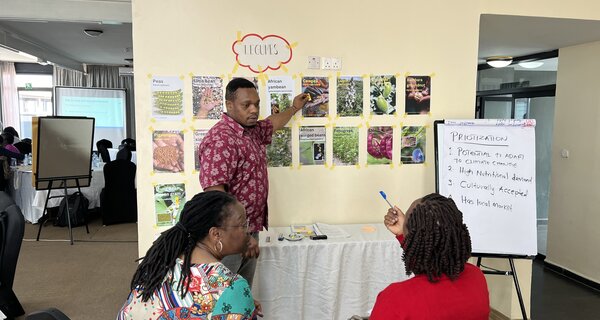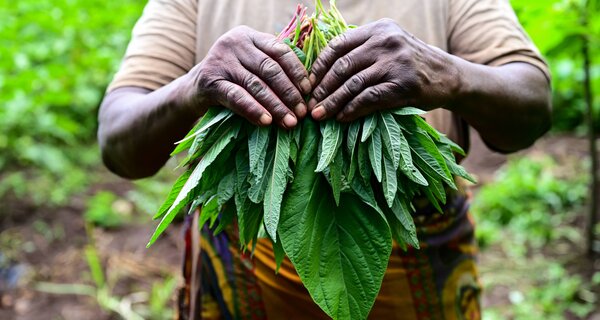Colombia Chooses Its Opportunity Crops
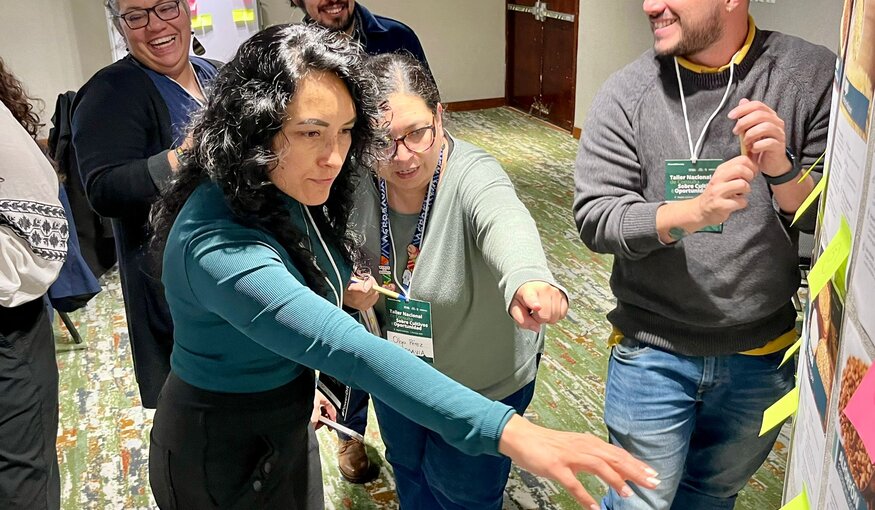
More than 40 stakeholders gathered to narrow down two opportunity crops from 48. Photo: Nico Wilms-Posen/Crop Trust
23 July 2025
In the final hours of the two-day workshop, the discussion really heated up. More than 40 stakeholders from all over Colombia had gathered at the event to select the best opportunity crops to promote out of a long list of 48. While everyone seemed to have their own favorite, a growing coalition of farmers, researchers and others coalesced around a couple of crops.
“There were some critical voices at the start saying ‘How can a group this large agree on just two crops?’” said Nico Wilms-Posen, coordinator of the Power of Diversity Funding Facility at the Crop Trust, which sponsored the workshop. “But in the end, everyone was satisfied with the choices.”
From 48 to Two
The participatory process to choose opportunity crops brought together representatives from the national government, farmers, researchers, environmental organizations, international cooperation agencies, agricultural unions and the private sector. The group finally chose peach palm and chayote, opportunity crops that will now receive critical support from the Funding Facility to tap their full potential for Colombia’s communities and economy.
Largely ignored by research and mainstream markets, these crops were chosen for their potential to diversify food systems, address climate change, enhance food security, and scale up impact across the country. The initial challenge is to document their value and integrate them strategically into public policy, research and markets.
“The prioritization event was a key opportunity to align scientific research with strategy, ensuring we focus our efforts where they can have the greatest impact for farmers and food systems,” said Lizeth Llanos, senior data scientist at the Alliance of Bioversity International and CIAT, who participated in the workshop.
All Hands on Deck for Peach Palm and Chayote
According to Wilms-Posen, stakeholders voiced strong concerns about the erosion of traditional knowledge about peach palm and chayote, as well as the double burden of malnutrition Colombia faces – rising undernutrition and obesity rates. And given the country's status as a biodiversity hotspot, the urgency to conserve native species came up again and again.
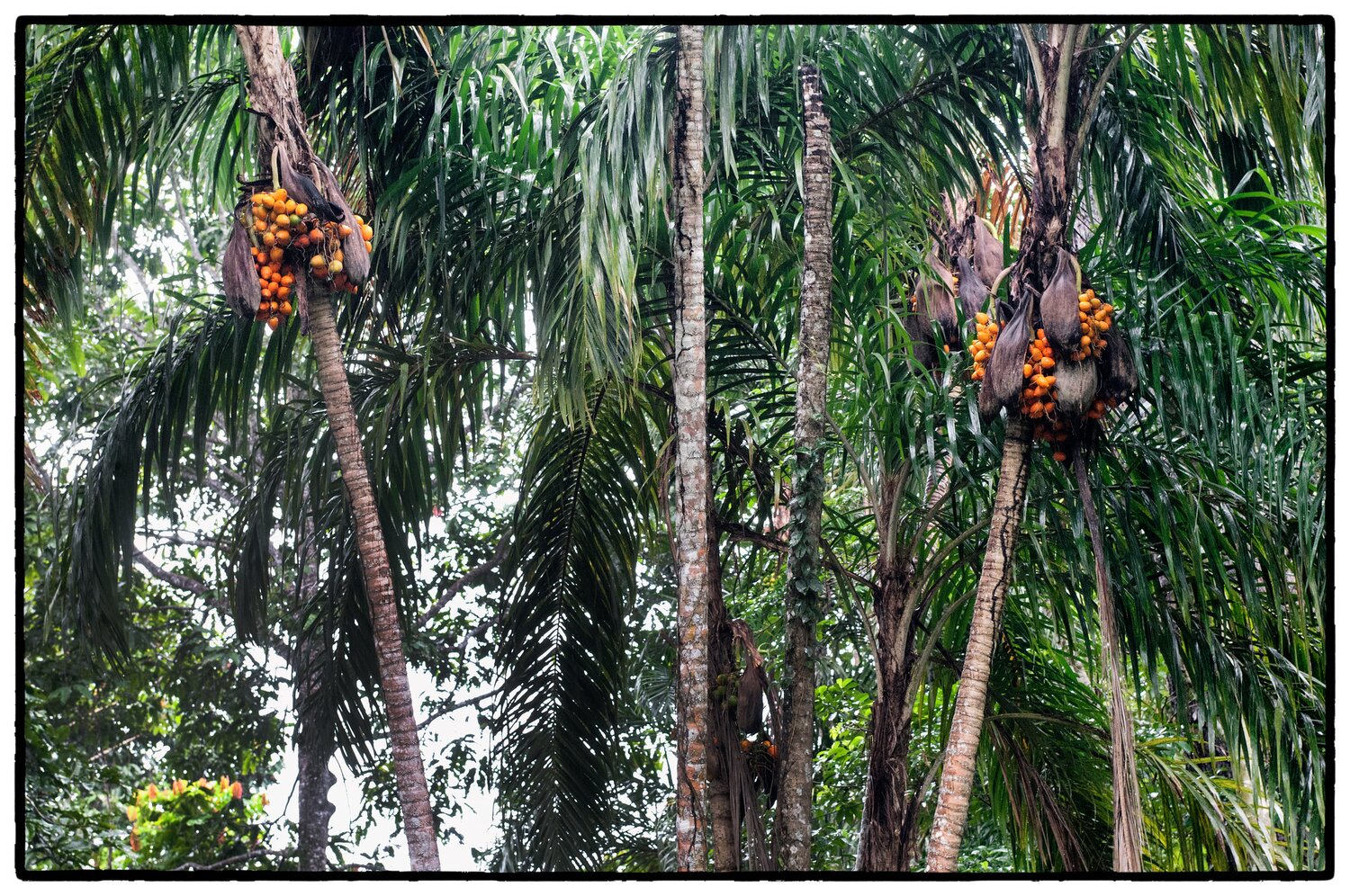
Peach palm tree with ripe fruit. Photo: Marco Simola/CIFOR-ICRAF
Peach palm stood out for its rich nutritional content – protein, high levels of vitamins A and E, calcium, and zinc – as well as its versatility. A native species cultivated from Nariño to Vaupés, its fruit is eaten boiled or in traditional beverages such as chicha and masato. Beyond its cultural value, the plant has multiple uses – palm heart, oil, animal feed, as well as wood for construction or handicrafts. Although its consumption is largely limited to the Pacific region, peach palm hearts have high potential for new markets. Yet in Colombia, only one seed sample has been recorded in genebanks.
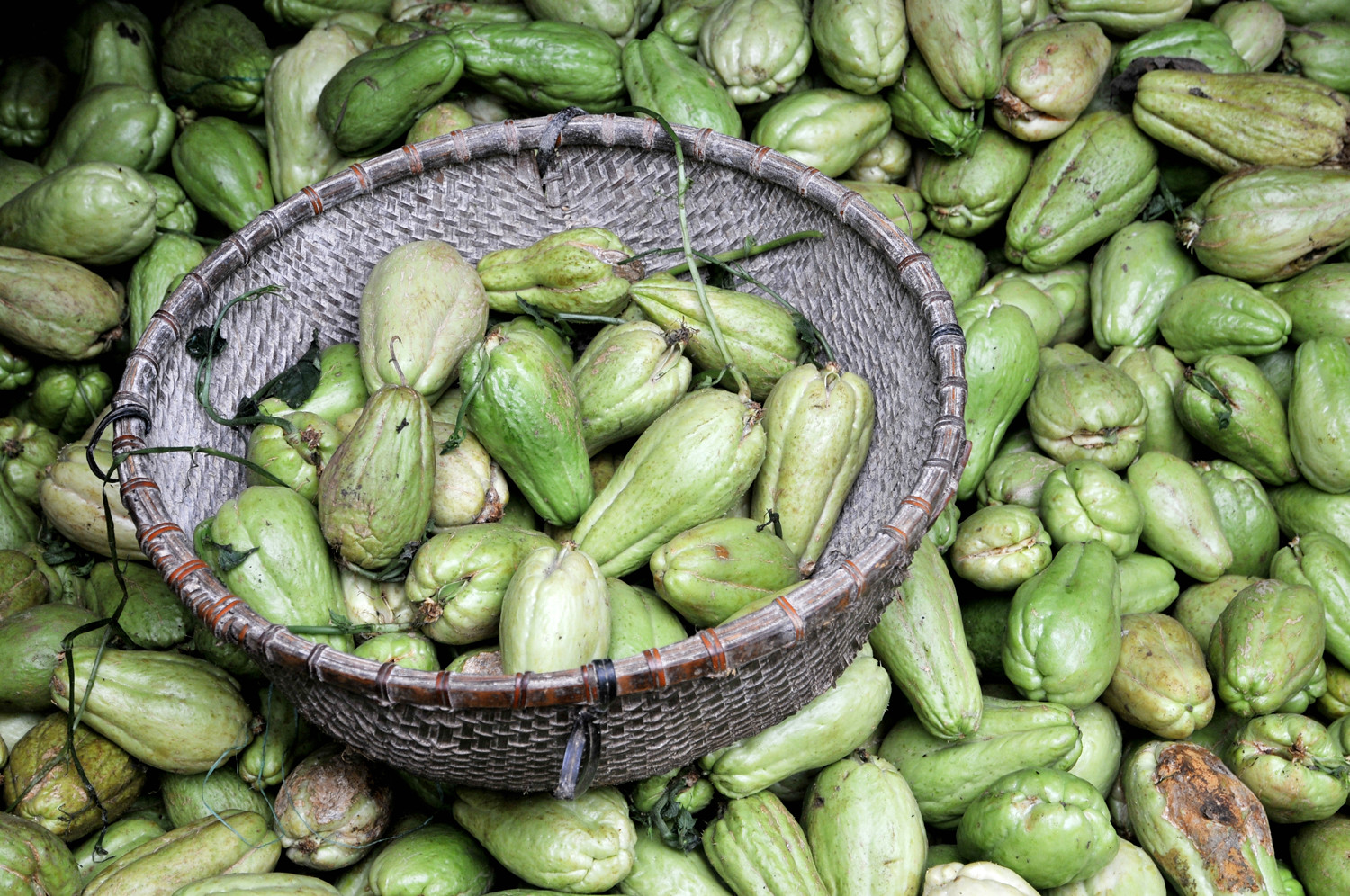
Chayote sold at a market in Vietnam. Photo: Neil Palmer/CIAT
Chayote was praised for its resilience to climate change and its ability to thrive with minimal inputs. It is a vegetable grown in temperate to warm areas of Nariño, Cauca, Antioquia, Cundinamarca, as well as some other regions. It is typically eaten cooked in soups, stews or salads. In addition to its culinary uses, its roots and leaves are used in traditional medicine. Commercialization of chayote is mainly local and rural, although there is an international market. Colombia has no recorded collections of chayote diversity.
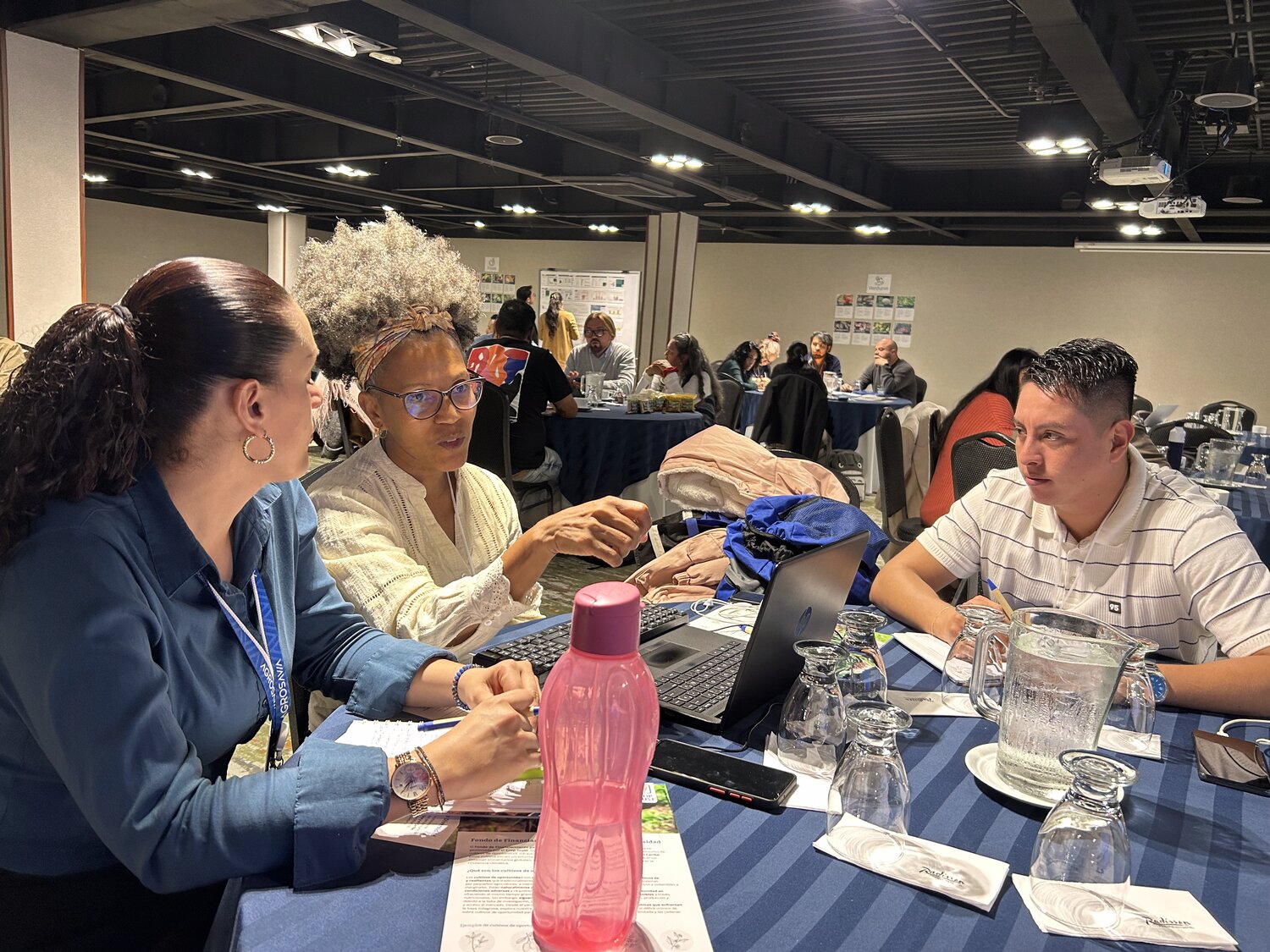
Diverse Tastes, Opinions and Partnerships
The atmosphere at the workshop reflected the diversity of the crops being considered. “Tastes really do vary – some participants said they really disliked the flavor of certain crops, while others loved them. In a way, individual taste buds were as diverse as the stakeholders in the room,” Wilms-Posen said. Beyond the debates and decisions, the event sparked new connections – between restaurant chains and rural cooperatives, and between researchers and policymakers.
The project will partner with Agrosavia to contribute to conservation, value chain development and knowledge creation around the selected crops. In August, priority areas for collection, capacity development and value chain development will be identified and prioritized for action over the next five years.
"Agrosavia has the opportunity to generate a joint effort so that, as a country, we can rescue the diversity found in our territory, integrate knowledge, and contribute – along with the wisdom of our communities and technical and scientific knowledge – to the conservation of this crop diversity and, perhaps, to its restoration to communities that have lost it," explained Carolina González, head of Agrosavia's Agrobiodiversity Department.
The prioritization process of the Power of Diversity Funding Facility now moves to Kenya, India, Nigeria and Zambia as part of a global effort to rescue, conserve and promote opportunity crops. Together with stakeholders and partners, the Crop Trust is working towards a more resilient and equitable future with new opportunities for agriculture.
The Power of Diversity Funding Facility selection workshop took place in Bogotá, Colombia, on 15-16 July, co-hosted by Agrosavia, the Alliance of Bioversity International and CIAT and the Crop Trust. The Funding Facility is financially supported by the German Federal Ministry for Economic Cooperation and Development (BMZ) through the KfW Development Bank, and the Department of Foreign Affairs of Ireland.
Categories: For The Press, For Partners, For Policymakers

